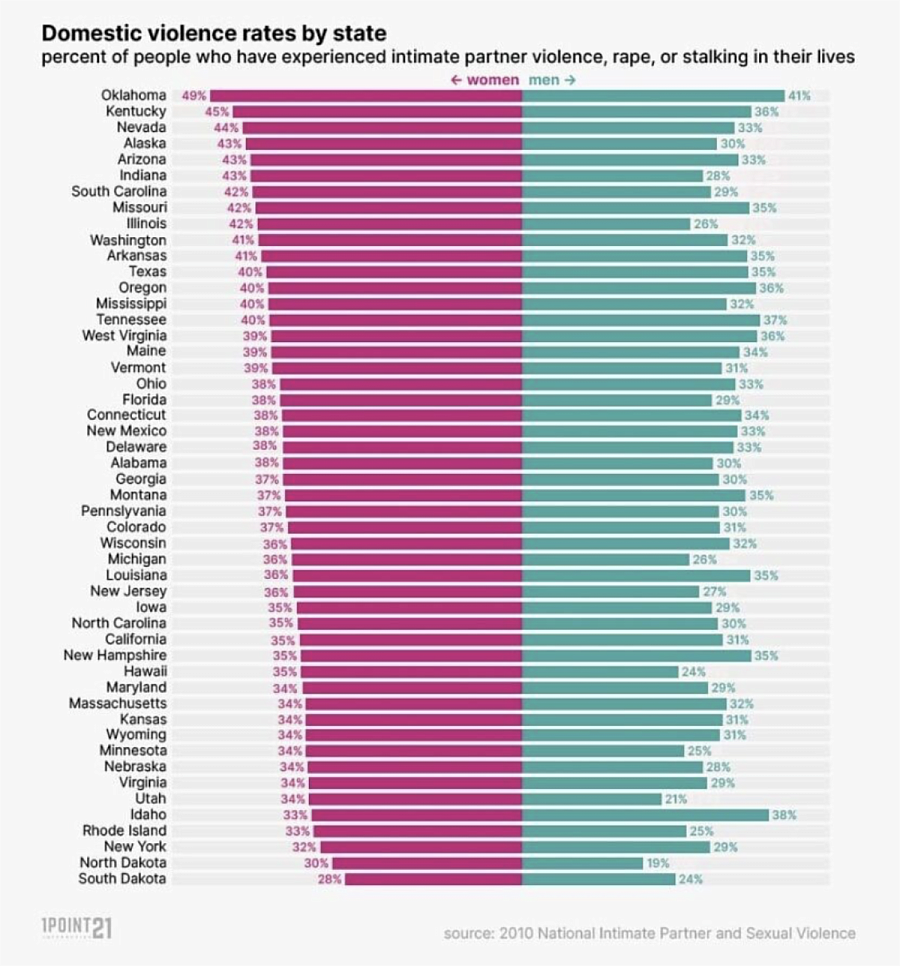The Health Divide: The Sean Combs headlines remind us domestic violence is a huge problem in the U.S.

(Photo by Nate Neelson via Unsplash)
I remember the first time I witnessed domestic violence.
I was 7 years old and spent the night at my cousin’s house.
His mother, whom I affectionately called Cousin Pearl, was beautiful. Her husband was nice until his weekend drinking benders.
It would start with one can of Schlitz Malt Liquor, then two, then six. When there were six or more empty cans on the living room table, he would become violent.
The night he struck my Cousin Pearl, he asked her to bring him another beer. She told him he already had too much. I was playing with my G.I. Joe action figures on the living room floor, looking up at the television, when I heard the slap.
I saw Cousin Pearl's husband, who stood about 6’2” and 230 pounds, standing over a defenseless body. I yelled at him to stop, but he didn't listen. I called my father, who came to pick me up.
It was the first time I had ever seen a man strike a woman, but unfortunately, it wouldn't be the last.
Today, intimate partner violence is a significant and pervasive issue in the United States, constituting over 20% of all violent crimes.
Shockingly, this means that approximately 20 individuals suffer physical abuse at the hands of a partner every minute, amounting to a staggering 10 million people experiencing domestic violence annually.
Victims should be believed
Intimate partner violence is making headlines right now after the video of Sean Combs was released last week, showing the hip-hop mogul shove, grab, drag, and kick his ex-girlfriend Cassie Ventura on a hotel surveillance video from 2016. Combs had previously denied any claims of abuse last fall.
Natalie Hayden, co-host of “Exposed The Podcast,” which is part of a Milwaukee nonprofit that focuses on supporting survivors of domestic abuse, stated that the Combs incident signals a troubling trend of victims of domestic violence not being believed.
“When someone tells you they are the victim of intimate partner violence, you should believe them,” she said.
Ventura, Comb’s ex-girlfriend, delivered a similar message last week after the 2016 video surfaced. “My only ask is that everyone open your heart to believing victims the first time,” she said. “It takes a lot of heart to tell the truth out of a situation that you were powerless in.”
After lockdown orders were put in place during the 2020 pandemic, a report from the National Commission on COVID-19 and Criminal Justice showed that incidents of domestic violence in the U.S. increased by more than 8%.
The pandemic's home isolation separated potential abuse victims from their support networks, making it difficult to detect signs of abuse and escape dangerous environments. This was incredibly challenging for those living in poverty or for women with children, as it hindered their ability to leave, Hayden said.
Domestic violence and intimate partner violence numbers are staggering. According to the National Coalition Against Domestic Violence (NCADV):
Approximately 35.6% of women and 28.5% of men in the U.S. have experienced rape, physical violence, and/or stalking by an intimate partner in their lifetime.
Around half of women and men have experienced psychological aggression from an intimate partner in their lives.
Every year, an estimated 324,000 women are pregnant when they are subjected to violence by an intimate partner.
Factors such as financial struggles, depression, heavy drinking and drug use, and anger issues can increase the likelihood of someone becoming an abuser, Hayden said.
Making an exit plan
One of the most common responses to someone in an abusive relationship is, "Why don't you just leave?" Hayden, who was once in an abusive relationship, says it's not that easy, but it can be done.
Exiting an abusive situation can be incredibly challenging as survivors are frequently isolated from their support networks, feel trapped, and may experience financial manipulation. When the survivor has young children and lacks a secure refuge, the situation becomes even more distressing.

The National Coalition Against Domestic Violence emphasizes that the most dangerous time for a woman experiencing intimate partner violence is when she decides to leave. It is crucial to have a plan in place. If seeking refuge at a shelter doesn't work out, consider trying a different shelter, Hayden said.
Intimate partner violence can be a major risk factor leading to homelessness, which in turn increases the risk a survivor will be vulnerable to further abuse. Survivors in crisis often struggle to navigate the daunting process of seeking housing help or services for victims of abuse, and may not know where to start or where to get help.
Some individuals who are victims of intimate partner abuse may feel compelled to return to their abuser because of financial dependency or control. Abusive partners may seek to exert control through technology (tracking a partner’s movements) or by controlling the family’s children, as reporters heard recently as the 2024 Domestic Violence Symposium hosted online by the Center for Health Journalism.
“If there’s no housing to go to, you’re facing an impossible choice of: Do I stay in a home that is unsafe for me but keeps my children fed and a roof over their heads?” Krista Colón of the California Partnership to End Domestic Violence told journalists at the symposium.
Domestic violence affects people of all races, but individuals in communities of color and religious communities may face additional barriers to leaving abusive relationships due to religious beliefs and loyalty to the family.
Many people in these communities may also hesitate to seek help from law enforcement out of fear that their abuser will be harmed or killed.
In one high-profile example, rapper Megan Thee Stallion said she initially lied to the police after being shot in the foot by her intimate partner, fellow rapper Tory Lanez, in 2020. Stallion later admitted said she initially lied because she was afraid that the police would respond violently if called to the scene involving Lanez, a Black man who had a gun in his car.
**
It took my Cousin Pearl years to leave. More than a decade after the first time I saw her hit by her husband, I remember my father picking me up from Maquette University for the weekend. He took me to the hospital to her, battered and bruised.
Her husband had almost killed her. He broke three of her ribs, pulled out plugs of her hair, and left her with two black eyes.
I begged her to leave him. She said she would and that this time was the final straw.
She didn’t have to leave him. He left her for another woman.
The cycle was finally broken, but it took years of fractures and bruises for their relationship to conclude.
Unjust blame is often directed at abuse victims due to the mistaken belief that they willingly remain in abusive relationships. It’s essential to understand that ending abuse is not solely a matter of the survivor choosing to leave; it also hinges on their ability to safely escape.

